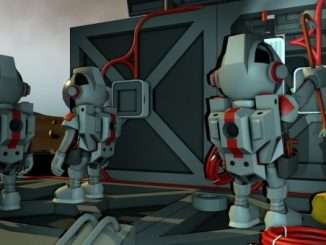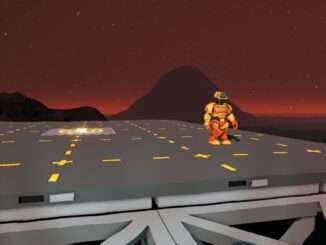
A very quick and dirty guide to understanding the new Phase Change changes in Stationeers to cool your base and how heat pumps work.
Heatpumps Crash Course
Welcome to this very short crash course in cooling stuff with phase change!
Phase change is the process of changing between Solid, Liquid and Gas state.
All the gasses and liquids in the game that can be pumped through pipes, now has a boiling/condensation point, and a freezing/melting point.
The process of phase change moves energy. This energy is absorbed and released in the form of heat.
This is where heatpumps come in..
Heat pumps are more or less exactly what you’d expect in the game compared to real life, and if you’ve worked with heatpumps in real life before, the concept of them is basically the same here.
If you raise the pressure of something (by compressing it/pumping it), you’ll raise its boiling point.
So e.g pollutant will happily turn into liquid upto ~135C, and gets hot in the process (release of energy).
If you then run that hot liquid through a radiator (like the outside part of an airconditioning), and then you take that room temp gas inside and put it into a radiator at much lower pressure with some valve or a slow pump, that’ll cause the liquid to evaporate (lowest Pollutants will evaporate is at around -80C and 6kPa pressure), which then causes the temperature to go down because of the evaporation (energy is required for the gas to evaporate and thus it absorbs heat).
As practical example, you can make an air vent on Vulcan and let it take in outside air at night, at around 5-6MPa pollutants will condense, making the 127C input temperature turn into ~150C, which you then run through a radiator, and run the 127C liquid pollutants through a low pressure evaporator/radiator inside, the evaporation will cause the 127C to turn into ~50C, which is technically speaking livable for humans.
If you then add a second stage, using a small chamber where you evaporate some of the pollutants, causing the temperature to drop, and then run the liquid pollutants through some radiators inside that chamber, and you effectively take off another ~30-50C.
You can keep chaining those stages until you hit the minimum evap temperature of Pollutants, which is about -70C to -80C, if you can drop the pressure low enough. Then you can start using something like Nitrogen for the next few stages, and then Hydrogen eventually to get to absolute zero probably, which I haven’t tried myself, but I think you should get the gist of heat pumps and phase change now, if not, feel free to comment below and I’ll explain it and add it to this guide.
Things to Watch Out For
Liquids in gas pipes don’t mix
Phase change can also bite you in the arse if you don’t know what it can cause. I recommend checking the gasses part of the ingame guide (press F1) to see what temperatures and pressures your system needs to run at.
For example, storing a water tank with 99999C water will obviously be a problem now, as this water will turn into steam, gaining a lot of pressure in the process, and likely blowing apart whatever containment vessel it was in.
But less obviously, if you have a coolant system with gas pipes with Pollutant as coolant, you might want to make sure the temperature of the pollutants stays above ~150C to avoid accidental condensation when you raise the pressure.
For example if you have 50C pollutants in a tank at 10MPa, a lot of that is going to condensate in the tank, lowering the temperature in the process.
For tanks this is not an issue, but the gas pipes appear to currently have a ‘stress’ mechanic that causes them to burst if there’s too much liquid in them.
Liquid pipes do not have this issue, so right now personally I’m using Liquid Pipes as my ‘high pressure pipe’, injecting gasses into it with valves if needed. That way I don’t risk accidentally blowing everything up when I experiment with heat pumps.
Vacuums and very low temperatures
Likewise, when you’re on a very cold planet, or in space or on the moon where you’re exposed to vacuum, you may end up causing things to freeze solid.
Solids inside a pipe will cause the pipe to burst.
A safe way to make sure that doesn’t happen to you, is keeping the outdoor radiator loop as close to vacuum as possible, only cycling a little bit of coolant through it at a time at a low pressure, to make sure it doesn’t under-cool and freeze.
Every gas has their lowest condensation and freezing points at the lowest pressures, so keeping the pressure low will help prevent freezing and accidental condensation from happening.





Examples would be very helpful. Learning how to actually use the devices and pipes and stuff to cool things has been one of the hardest things for me, and I really am a visual learner, so just reading ‘oh yeah the science works this way…’ leaves me going “okay cool my eyes glazed over a bit though how do I actually make this happen? D:”